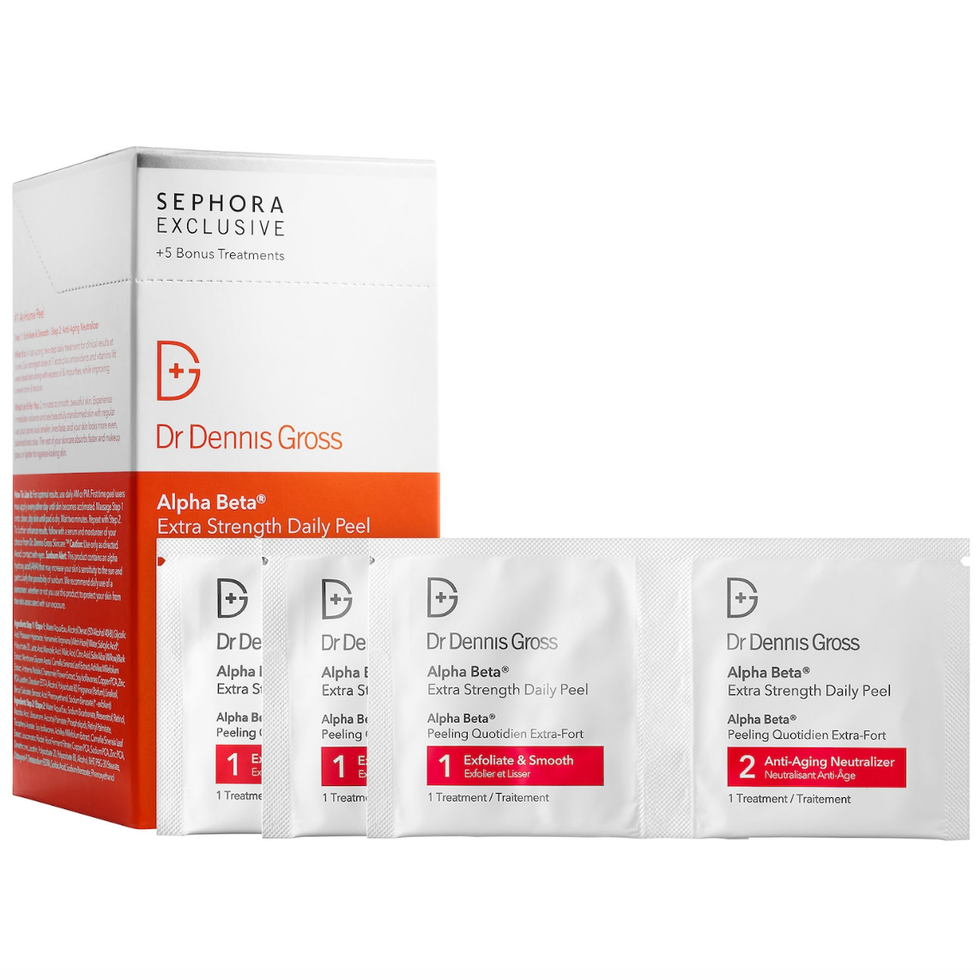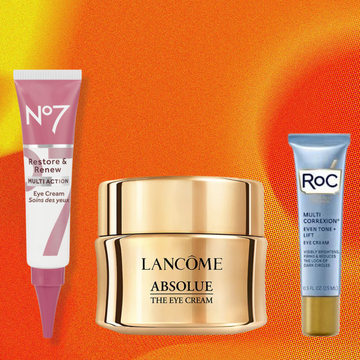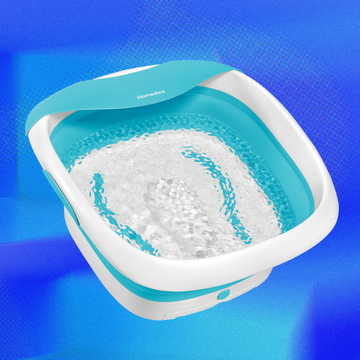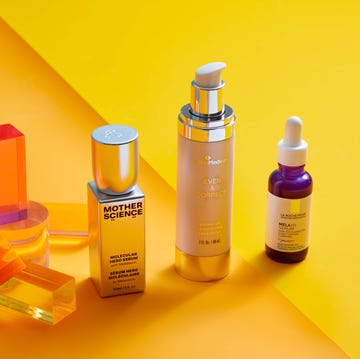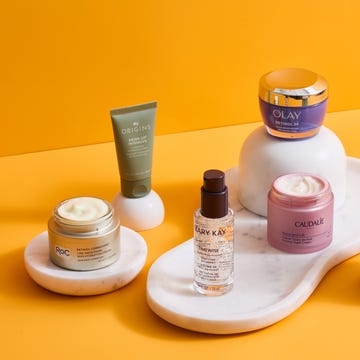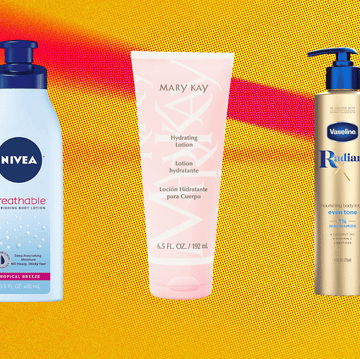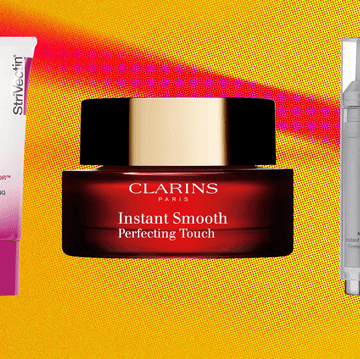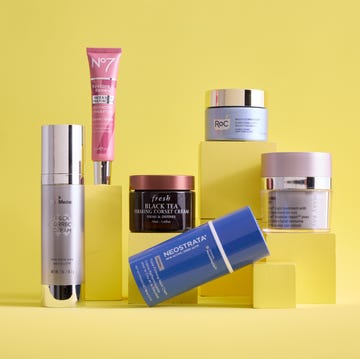Hearing the word "acid" or "chemical" in any type of skincare product can be daunting, but we promise it's not. Hyaluronic acid, for example, is actually produced naturally by the human body and is a hero hydrator, especially for dry skin. You may have also seen the word "acid" on other skincare products, such as star chemical exfoliators salicylic acid (ideal for acne-prone skin) or glycolic acid (great for boosting radiance).
The increasingly popular mandelic acid is starting to come to the forefront as well, and if you haven't heard of it yet, we're here to tell you everything you need to know about this sensitive skin-friendly exfoliator, including how to use it, who it's best for, side effects and more.
What is mandelic acid?
There are several types of chemical exfoliators, including AHAs, BHAs and PHAs — mandelic acid is an AHA derived from bitter almonds. It was discovered in Germany in 1831 and actually gets its name from the German word for almond, "mandel," shares GH Beauty Lab Director Sabina Wizemann. The chemical exfoliant "works by breaking down the bonds between skin cells, promoting exfoliation and revealing fresher, smoother skin underneath," says Ali Shahbaz, M.D. F.A.A.D. F.R.C.P.C., a double board-certified dermatologist at Westlake Dermatology in Austin, Texas.
What are the benefits of mandelic acid?
Mandelic acid has a similar molecular structure to glycolic acid but with larger molecules, explains Shereene Idriss, M.D., a board-certified dermatologist and founder of Idriss Dermatology in New York City. The larger molecular size means that "it penetrates the skin more slowly and gently, making it suitable for sensitive skin types and reducing the risk of irritation," adds Dr. Shahbaz.
Here, more on the benefits of the gentle exfoliant:
✔️ Exfoliates
First and foremost, it, of course, provides exfoliation. Mandelic acid "helps to remove dead skin cells from the surface of the skin, promoting a brighter complexion," says Dr. Shahbaz. This also smoothes skin and improves tone and texture, notes Blair Murphy-Rose, M.D., F.A.A.D., a board-certified dermatologist at the Laser & Skin Surgery Center of New York and Clinical Instructor of Dermatology at Weill Cornell Medical College.
✔️ Anti-aging
Using this chemical exfoliant can "reduce the appearance of fine lines and wrinkles," says Dr. Idriss. It does so by "stimulating collagen production," explains Dr. Shahbaz. Mandelic acid can also reduce dullness, adds Dr. Murphy-Rose.
✔️ Anti-acne
"Mandelic acid has antibacterial properties and prevents clogged pores," explains Dr. Murphy-Rose. This makes it effective in treating acne-prone skin, Dr. Idriss adds. One study even showed that "mandelic acid was better at treating inflammatory acne lesions and had fewer adverse effects compared to salicylic acid," says Wizemann.
✔️ Treats hyperpigmentation
Fading dark spots is possible if you incorporate this exfoliant into your routine. It "can improve the appearance of hyperpigmentation, including dark spots and uneven skin tone, by promoting cell turnover and inhibiting melanin production," explains Dr. Shahbaz.
How long does it take for mandelic acid to work?
The time it takes to see results from using mandelic acid varies on several factors, "as not all are created equal and some products may be a combination of multiple exfoliating acids," says Dr. Idriss. Skin type, product concentration and frequency of use can also play into how long it takes. However, in general, "you may start noticing improvements in skin texture and tone within a few weeks of consistent use, but significant results may take longer, around six to 12 weeks," says Dr. Shahbaz.
Is there anyone who shouldn't use mandelic acid?
Due to its larger molecular size, mandelic acid is known for being gentle enough to be used on many skin types, even sensitive. However, that doesn't mean that it's for everyone. People with sensitive skin, eczema or open acne wounds "may still react to it and should use it cautiously," advises Wizemann. Note that "those with allergies to almonds should avoid mandelic acid," Dr. Shahbaz warns.
What are the side effects of mandelic acid?
Side effects of mandelic acid "may include mild irritation, redness and peeling, particularly with higher concentrations or when first starting use," notes Dr. Shahbaz. "People with very sensitive skin may need to start with lower concentrations and gradually increase frequency of use." Overusing any AHA, including mandelic acid, "increases photosensitivity, so it is even more important to use sun protection when using these ingredients," adds Dr. Murphy-Rose.
What skin types is mandelic acid best for?
Great for sensitive skin especially, mandelic acid is "generally considered safe for most skin types," says Dr. Idriss. "However, as with all exfoliating acids, be careful not to overdo it and wreck your skin barrier in the process." Dr. Murphy-Rose even recommends it for those who cannot tolerate stronger acids. If you have sensitive skin, acne-prone skin or aging skin, this can be a great ingredient to include in your skincare routine. Regardless of how oily or dry your skin is, you can likely benefit from mandelic acid.
How to use mandelic acid
Our experts advise using mandelic acid products at night. "You can use a mandelic acid serum three to four times a week on nights that you are not using a retinol [or any other actives such as acids]," recommends Dr. Idriss, as using multiple actives on the same night can cause over-exfoliation and irritate your skin.
If you do experience irritation, you can reduce the number of times per week and gradually increase as tolerated, explains Dr. Shahbaz, who also says to remember to "always follow with sunscreen during the day, as AHAs can increase sun sensitivity." Lastly, Dr. Murphy-Rose suggests applying a moisturizer after exfoliating.
Searching for products with mandelic acid in them? Here are a few recommended by our Beauty Lab and dermatologist experts:
Sabina (she/her) is the director of the Beauty, Health & Sustainability Lab at the Good Housekeeping Institute, where she has overseen skincare, haircare and makeup testing since 2012. She also reviews applications, substantiates claims and evaluates products for the GH Seal and the Beauty Awards and Sustainability Awards programs. She has a B.S. in chemistry from Ithaca College and more than 16 years of experience working in the pharmaceutical and personal care industries.
Carmen Castilla, M.D., is a Manhattan-based, board-certified dermatologist specializing in personalized, patient-centered treatment plans in cosmetic and medical dermatology. She graduated cum laude from New York University before going on to attend Rutgers New Jersey Medical School where she was a member of the highest honor society—Alpha Omega Alpha. She then completed her internship in internal medicine at the renowned Brigham and Women’s Hospital-Harvard Medical School in Boston and her dermatology training at New York University Langone Hospital, one of the top-ranked programs in the country. As an internationally-recognized thought leader in skincare and holistic medicine, she has published numerous papers and textbook chapters, is an expert source for media, and has a passion for sharing her evidence-based knowledge. She sees patients at New York Dermatology Group and is a clinical instructor at Mount Sinai Hospital.

